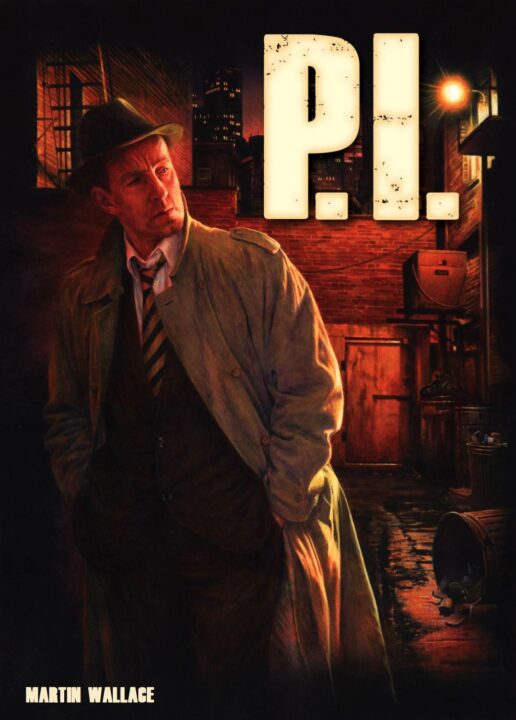How To Play: P.I.
In my latest adventure, I played 'How to Play p.i.', diving into its mysterious world with friends. We tackled strategy guides on understanding clues, strategic questioning, and mastering the art of bluffing and deduction. The game, full of intrigue and mind games, proved to be both challenging and thrilling.

Hey there, fellow gamers and sleuths! If you’re looking to up your game in the mysterious world of “How to Play p.i.,” you’ve stumbled upon treasure. This guide isn’t just a rundown of the rules; it’s a goldmine of strategies to turn you into a detective extraordinaire. From mastering the art of deduction to bamboozling your opponents with your bluffing skills, we’ve got it all. So, grab your magnifying glass, and let’s crack the case on how to win at this game.
Overview
What’s in the box
- 1 Game board
- 100 Case cards
- 108 Evidence tokens
- 12 Investigator tokens
- 6 Private Investigator screens
- 6 Player markers
- 6 Notepad sheets
- 1 Rulebook
How To Play P.I.: Rules Summary
Setup
- Place the game board in the center of the table.
- Each player chooses a detective agency and takes the corresponding pieces.
- Shuffle the Case File cards and deal three to each player face down.
- Players place their investigator tokens near the board.
- Set aside the time marker, clue tokens, and other game components within everyone’s reach.
Gameplay
- Players take turns to roll the die and move around the board, collecting clues.
- When you land on a Clue space, draw a Clue card and follow its instructions.
- Use strategic questioning to gather information from your opponents.
- At any point, if you think you know a suspect, location, and weapon, make an accusation.
Winning
- The game ends when a player successfully solves three cases.
- To win, accurately name the suspect, location, and weapon involved in the case.
- If your accusation is wrong, you’re out of the round, but you can still win future cases.
Special Rules & Conditions
- If a player lands on another detective, they can ask one questioning out of turn.
- Use bluffing to mislead others about your cases.
- Special Clue cards can change the game’s direction, so adapt your strategy accordingly.
With these rules in mind, gather your detective friends, and may the best sleuth win!
Best P.I. Strategies
Unlocking the Secrets: Mastering Clue Interpretation in P.I.
Winning at P.I. isn’t just about asking the right questions; it’s about understanding the answers. Here’s how you can become a clue deciphering pro.
Step 1: Identify the Patterns
- Look for patterns in the clues you receive. This helps pinpoint specific areas on the board.
- Compare clues with known facts. It narrows down possibilities.
Step 2: Context is Key
- Consider the context of each clue. What does it imply about surrounding locations?
- Use the game’s theme to guide interpretations. Some answers are thematic.
Step 3: Trust Your Instincts
- Don’t overthink. Sometimes, the first guess is the right direction.
- Share your hunches with teammates, if playing in a team. It could lead to breakthroughs.
Unlocking Victory: Strategic Questioning in Board Games
Strategic questioning turns the tide in many board games. It’s not just about asking; it’s how and when you ask. Let’s break it down.
Timing Is Everything
Ask questions when they least expect it. This keeps opponents on their toes.
Layer Your Questions
- Start broad, then narrow down. This hides your true intent.
- Alternate between different types of questions to avoid patterns.
Read the Room
Observe reactions. Sometimes, it’s not the answer but the hesitation or confidence that gives away more.
Master the Game with Bluffing and Deduction
Bluffing and deduction are your secret weapons. Use them wisely to outsmart your opponents and clinch victory. Let’s break it down.
Understanding Bluffing
- Start with small bluffs to test the waters.
- Watch reactions closely. They give clues.
- Keep a straight face. Any hint can ruin the bluff.
Mastering Deduction
- Look for patterns in opponents’ actions.
- Don’t ignore odd plays; they’re often the key.
- Trust your gut. Sometimes, the first hunch is right.
Combining Strategies
- Use deduction to inform your bluffs.
- Bluff to test your deductions.
- Remember, a good game is a balance of both.
Array
Want to know what we think of P.I.? Read our detailed review of P.I. here

